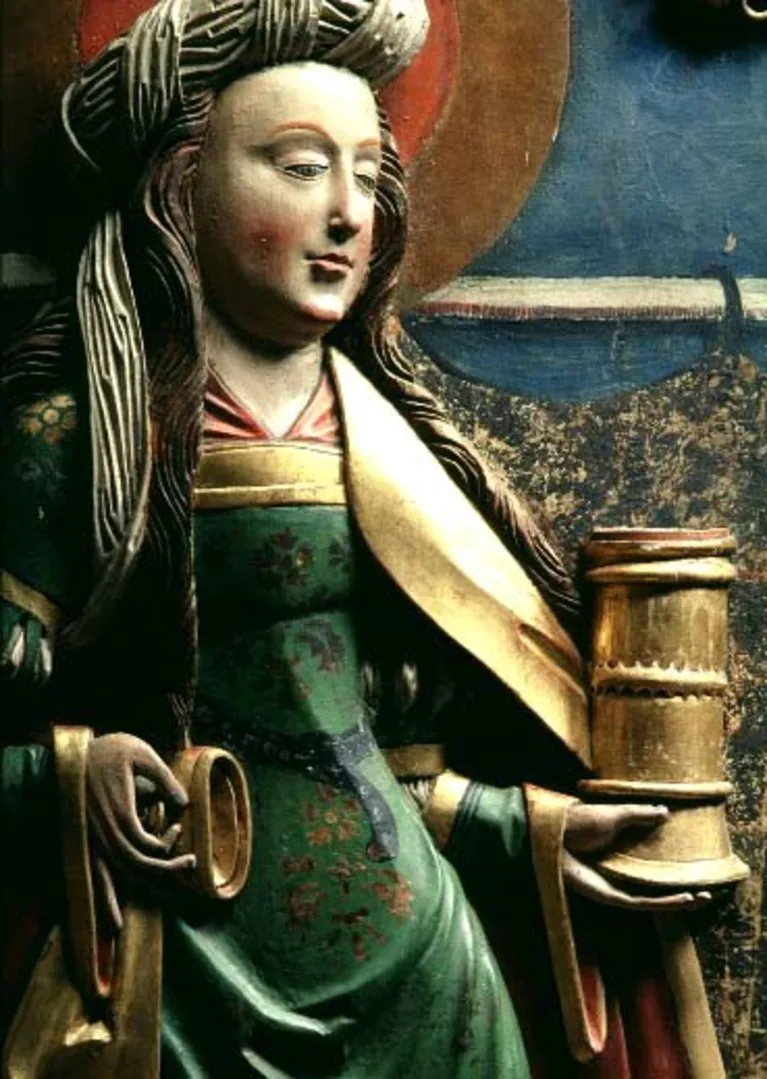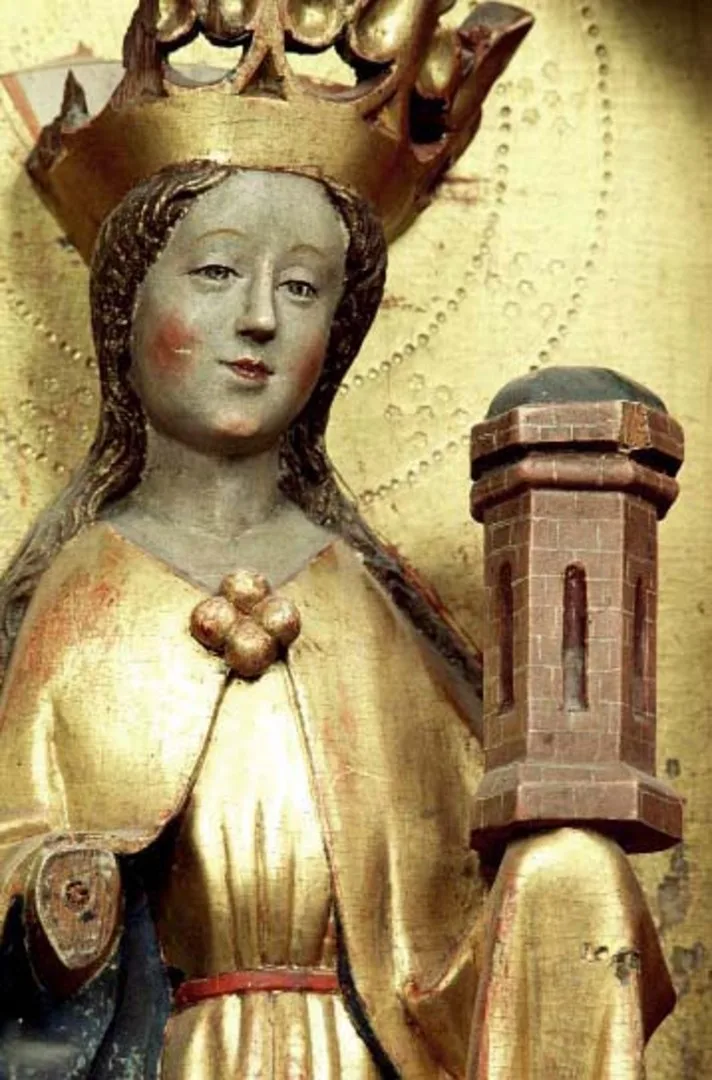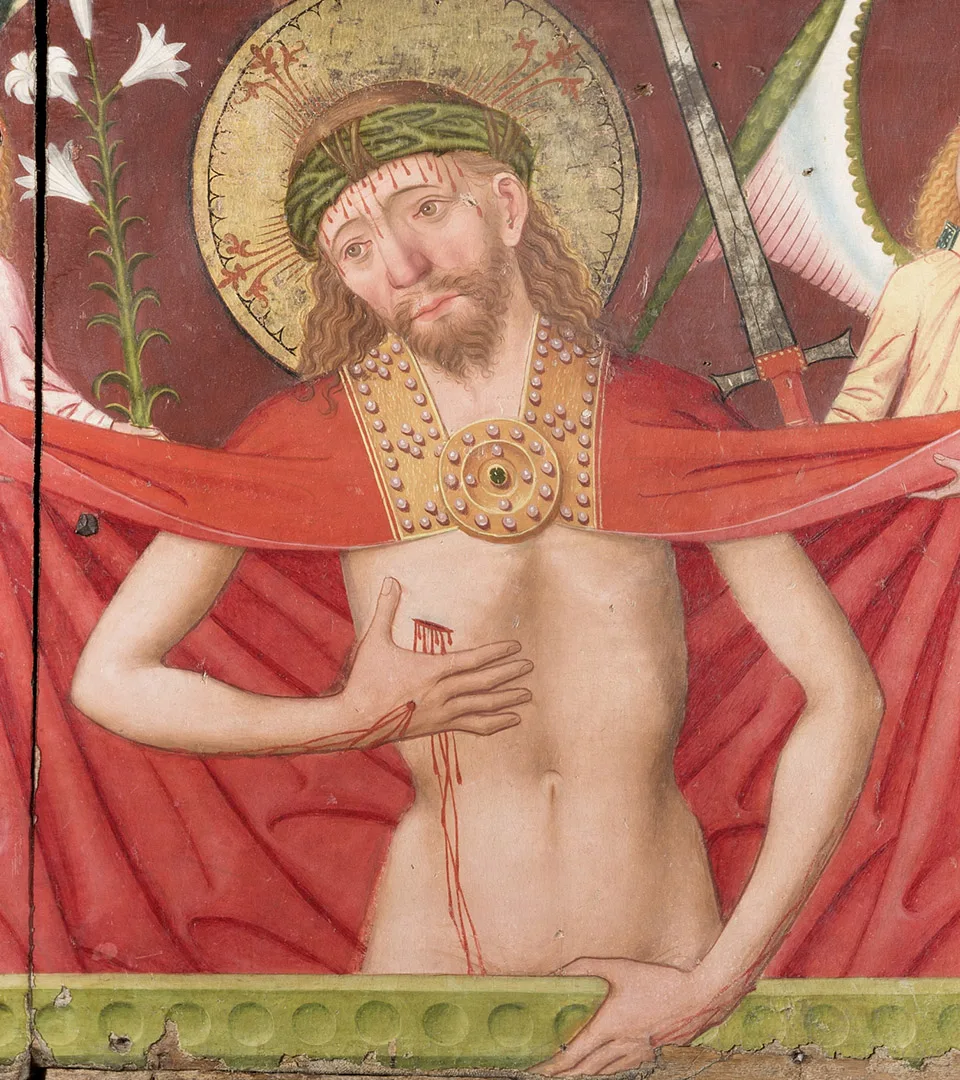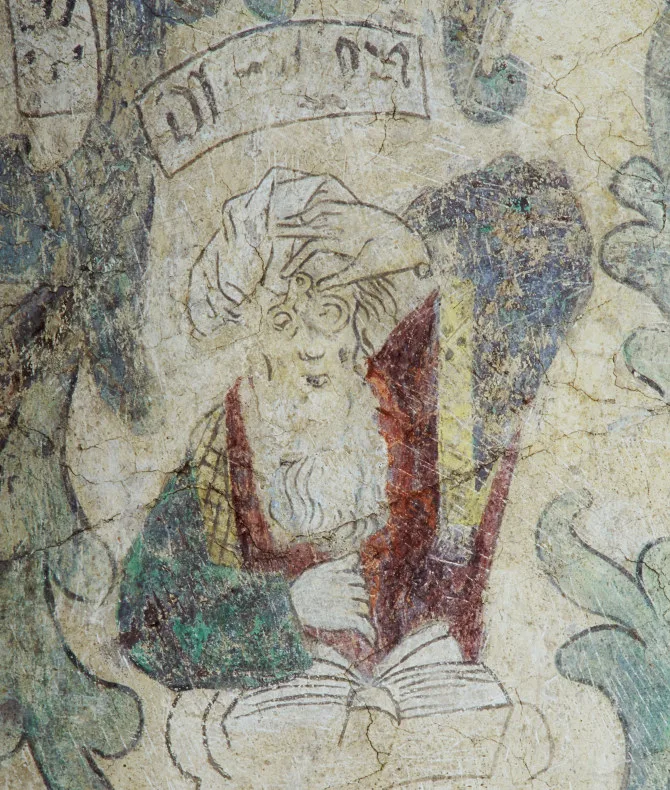Medieval saint: Barbara
Viking Age
AD 800 – AD 1100
Middle Ages
AD 1050 – AD 1520
Modern Age
AD 1520 – AD 2025
According to legend, Barbara was born in Nicomedia, near the Sea of Marmara. Her father, the powerful and wealthy Dioscorus, had her locked away in a tower because of her beauty, wishing to shield her from the outside world.
Nevertheless, she came into contact with Christianity and converted. When her father discovered this he was furious. After she had been tortured in an attempt to make her renounce her faith, which she refused to do, Dioscorus himself beheaded her with his own sword.
How is Barbara depicted?
Barbara is usually shown wearing a crown, either standing beside a tower or holding a miniature tower in her hand. In the collections of the Swedish History Museum there is an altarpiece with such an image of Barbara, painted on one of the outer doors of the altarpiece from Västra Ed in Småland. The work was created in 1526, just before the Reformation.
Barbara’s feast day is 4 December.

Barbara
Altarpiece from Västra Ed, Småland.
On view at Historiska museet in the exhibition Medeltida konst

Barbara
From Segersta church, Hälsingland.







